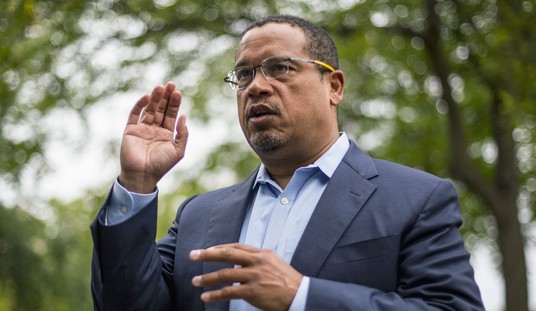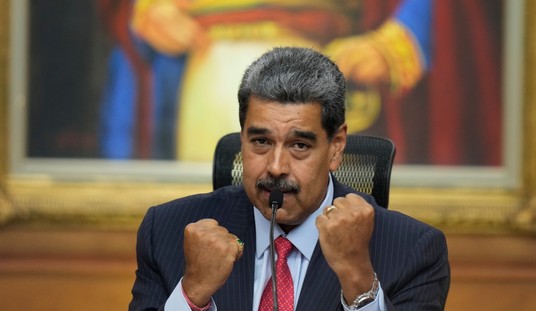This past week has produced excellent news on the progress of two vaccines for COVID-19. Both Pfizer and Moderna feel confident that they will soon be able to apply for emergency-use authorization from the FDA for their vaccines, and could start distributing tens of millions of doses perhaps even before Christmas. With the US transmission rates sharply increasing, that could be all but miraculous.
But will those doses actually make it to patients? Last night, state health officials warned that they don’t have the funds for distribution and delivery, which might mean that the vaccines sit in cold storage. Or it might just mean that the states are playing a cynical card to unlock the stalled negotiations on a Phase 4 bill. Or, likely, both:
State health officials are expressing frustration about a lack of federal financial support as they face orders to prepare to receive and distribute the first doses of a coronavirus vaccine by Nov. 15, even though one is not likely to be approved until later this year. The officials say they don’t have enough money to pay for the enormous and complicated undertaking.
State officials have been planning in earnest in recent weeks to get shots into arms even though no one knows which vaccine will be authorized by the Food and Drug Administration, what special storage and handling may be required and how many doses each state will receive. …
“It is absolutely ridiculous that the administration, after spending $10 billion for a Warp Speed effort to develop a vaccine, has no interest in a similar investment in a Warp Speed campaign to get the vaccine to every American as quickly as possible after it is approved,” said Michael Fraser, executive director of the Association of State and Territorial Health Officials.
Operation Warp Speed is the federal initiative, funded by more than $10 billion of taxpayer money, to fast-track development of coronavirus countermeasures.
“The now accelerated timeline underscores the need to address the issue of funding for state and territorial health agencies to make this all work,” Fraser said. “There are many other costs that have no clear way to be paid for at this point.”
This is a fair criticism, as far as it goes. The plan for getting the vaccine to patients has always relied on state and local resources, which is why the CDC has been warning them to prepare for delivery and distribution for weeks. Federal agencies don’t have the resources or infrastructure for this task, not in any volume and certainly not in the volume required for a pandemic vaccine. States have much more infrastructure and connections to private providers, although this does involve some special handling that will require emergency provisioning for storage all along the distribution channel.
In other words, it’s going to cost states a lot of money. And they are correct that they expected the federal government to pick up that tab. However, the problem isn’t the administration, but Congress. Trump wants to pass a hefty stimulus bill that includes vaccine-distribution funds, but also direct payments to taxpayers, a variety of payroll-support programs for businesses small and large, and more spending to keep the economy growing in the short term until businesses can fully reopen. Senate Republicans only want to spend money on the COVID-19 distribution programs and the Paycheck Protection Program, while Nancy Pelosi wants all of the above plus bloc-granted aid to states without any strings attached.
That’s the problem that has kept the funds from distribution efforts. Attempts to pass that funding on a component basis keep getting blocked in Congress, too. The Trump administration has no authority to appropriate new funds on its own; Congress controls that process, and it’s been stalled for three months. If anything, Trump’s gone farther than anyone, and is certainly more in favor of broader spending than most Senate Republicans.
Fear not, however, because the main obstacle for a compromise will be removed on Tuesday. Once all the ballots have been cast — if not yet counted — the lame-duck session of Congress will likely have more flexibility on cutting a deal along the lines Trump has already outlined:
The dynamics on Capitol Hill could also change, depending on the election outcome. Some lawmakers think Democrats would rather just hold out for a better deal under the next president if Joe Biden wins, while others think Trump would have little incentive to sign a big bill if he loses. Not to mention, Congress is going to have to prevent a government shutdown before the year is over.
But a spending bill could also provide a vehicle for Covid aid to hitch a ride — and it’s hard to imagine Congress leaving town for the holidays without providing much-needed relief to the American people. Plus, without the pressures of an election, it could be easier to get some Senate Republicans on board. Many of them have been reluctant to support a massive package negotiated by Pelosi right before Nov. 3.
True, and it’s just as true that Pelosi has been reluctant to accept a White House deal before then either, and for the same reason. This has been election posturing all along. Regardless of who wins or loses, the deal gets easier to make once the vote comes in. If Biden does win, then Pelosi can go with the component approach, confident that Biden will approve a massive state bailout early next year. If Trump wins, then Pelosi will want a bigger deal, but Senate Republicans will want to get this out of the way before the next session in order to get the political pain behind them before the next session of Congress.
And no one — no one — will want to be responsible for blocking distribution of an effective vaccine. Bet on a deal by the CDC’s November 15 deadline, complete with full funding of the program.








